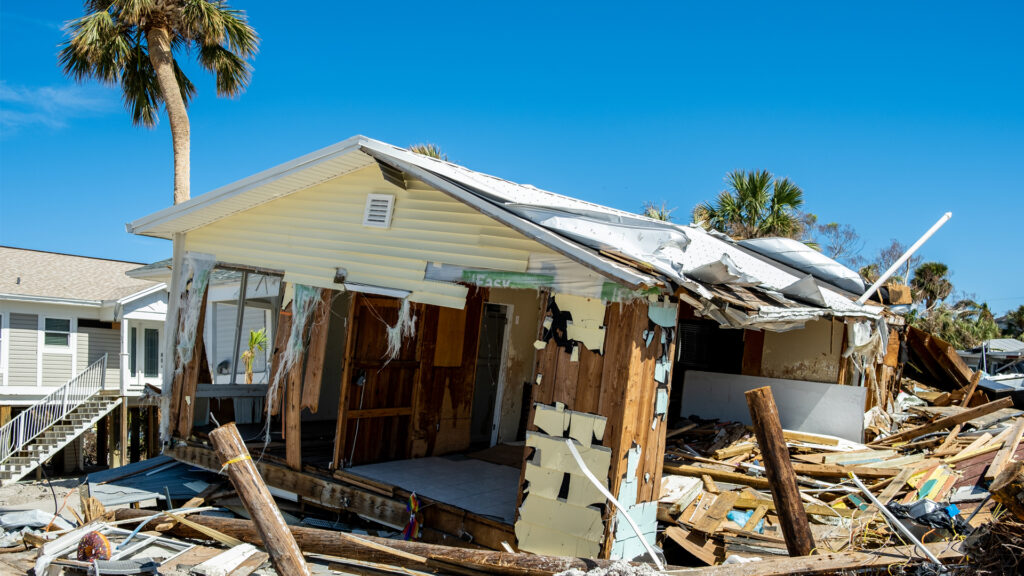By Mary Anna Mancuso, RepublicEn.org
In recent years, people have — year-round, but often when winter is harsh — flocked to Florida to enjoy the abundance of sunshine, pristine beaches and consistently warm temperatures. As the Sunshine State has seen an increase in population, many newcomers opt to make their home on the coast. In fact, 76% of Floridians live in coastal areas that are at risk of sea-level rise and increased hurricane activity.
Florida is no stranger to hurricane devastation, including in 2022 with Hurricane Ian making landfall and delivering devastation along the west coast, leaving an estimated $113 billion in damage in its wake. As hurricanes become increasingly costly and damaging, the Federal Emergency Management Agency (FEMA) is sending a clear message to Floridians: Building along coastal areas is no longer a prudent choice.
Building along Florida’s coast is a risk in and of itself, but rebuilding after a devastating hurricane such as Ian with the help of FEMA can be tricky.

As homeowners in Florida have watched, big insurance companies left the state and took their flood insurance policies with them. Consequently, some have opted to purchase subsidized insurance through FEMA. However, this comes with conditions, notably the “50% rule,” which mandates that if a home sustains damages exceeding half its value, it must be raised above flood level. This requirement can translate to significant financial burdens for homeowners.
To monitor compliance with the 50% rule, local officials in flood-prone areas are tasked with ensuring that constituents do not rebuild in vulnerable zones. Communities that adhere to this regulation are rewarded with low-cost flood insurance subsidized by the federal government.
However, FEMA’s recent actions signal a policy shift, shifting the responsibility of climate change consequences onto local homeowners. In March, FEMA sent a letter to elected officials in Lee County, claiming roughly “600 homeowners in the city of Cape Coral and other nearby towns had rebuilt vulnerable homes in the flood zone over the 18 months since Hurricane Ian, violating the 50% rule as well as local construction laws,” as Grist reported.
Lee County is the eighth most-populous county in the Sunshine State. More than 230,000 people live along the coast in Cape Coral, standing at the forefront of this reckoning. As FEMA intensifies its oversight, Florida’s status as a “poison paradise” is underscored, with homeowners bracing for the inevitable onslaught of hurricane season.
The insurance crisis gripping Florida exacerbates these challenges, as major insurers withdraw from climate-threatened zones, leaving homeowners vulnerable and unprotected. With premiums skyrocketing and coverage dwindling, the dream of homeownership in paradise is fast becoming a precarious gamble.
In response, calls for climate resilience measures and resilient building practices have gained traction, offering a glimmer of hope amidst uncertainty. Yet, the road ahead remains fraught with challenges, demanding collective action to confront the root causes of climate change and safeguard communities against its ravages.
As Florida braces for the next storm season, the imperative for decisive action has never been clearer. The time to prioritize resilience, both at the individual and societal level, is now — lest we face the full force of nature’s wrath unprepared and unprotected.

In addition to these challenges, Florida must safeguard its booming real estate market. With coastal properties serving as a cornerstone of the state’s economy, any decline in property values could have widespread repercussions.
To safeguard this sector, policymakers must prioritize initiatives that enhance climate resilience and safeguard homeowners. This includes investing in infrastructure upgrades, enforcing stringent building codes and promoting resilient development practices.
By taking these steps, Florida can mitigate risks and bolster investor confidence while paving the way for a more sustainable and prosperous future, where homeownership remains attainable for all.
Mary Anna Mancuso is a political strategist and a spokesperson for RepublicEn.org, a growing group of conservatives who care about climate change.
If you are interested in submitting an opinion piece to The Invading Sea, email Editor Nathan Crabbe at ncrabbe@fau.edu. Sign up for The Invading Sea newsletter by visiting here.




The flaw in this post, is that there is no mention of combatting climate change by ending CO2 emissions and atmospheric methane. There is not a way to protect against increasing heat, storms and sea level rise through any resiliency if resiliency is the only strategy. The program MUST include transition to clean energy and regenerative agricultural.
Florida is controlled by very conservative Republicans who are not just ignoring the reason for the need develop coastal resiliency, but are actively removing any ability of local governments to legislate and regulate any transition away from CO2 emissions and atmospheric methane. The primary industries that benefit from avoiding this are big agriculture, fossil fuel, energy companies, Mosaic (phosphate mining), and real estate developers. These are the interests who are happily funding candidates who become legislators, at the local and state level, so that they are allowed to continue to contribute to climate change and all of its consequences. Then our tax dollars go into “resiliency”.
This past legislative session, there were 3 bills that addressed health and safety standards meant to protect outdoor workers from extreme heat. Two of them set minimum standards that involved water and heat breaks along with training and protocols that would identify workers who were at risk for heat related illnesses. One of them forbade local government from creating and enforcing health and safety standards. That latter was passed and signed into law by Gov. DeSantis. We do not want companies who employ outdoor workers to have to go to the expense of protecting them from heat related illnesses, that are potentially fatal?
It is going to get hotter and more difficult to work (or play golf) outside safely. Sea level will continue to rise, with increased same day flooding. Storms will get more virulent and costly. We cannot resiliency our way out of the consequences of climate change, it will only delay the inevitable.
So my conservative friends, PLEASE advocate to transition policies that end the massive CO2 and methane releases. Your grandchildren will thank you.